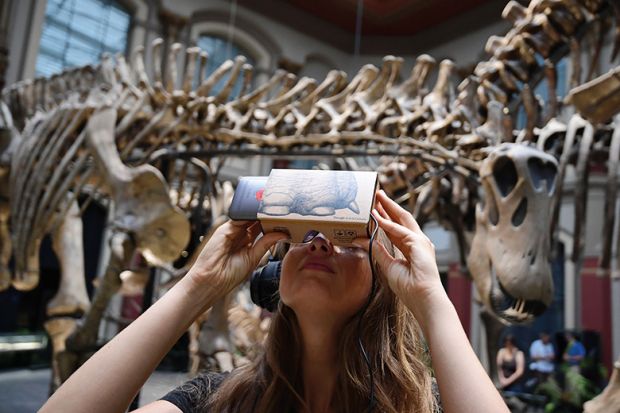The development of the teaching excellence framework (TEF) has caused UK universities to do a lot of soul-searching. Our education, as well as our research, is in the spotlight. And rightly so.
At research-intensive universities such as my own, we know that progress is driven by discovery, innovation and a willingness to take risks. Our researchers probe the boundaries of knowledge every day. They consider evidence, experiment, adapt and discover. But often that same evidential rigour is not being applied to teaching.
The traditional lecture-based model of teaching is still very prevalent, despite a growing body of literature, especially in the fields of science, technology, engineering and mathematics, indicating that it doesn’t work that well for students. Countless studies have now confirmed that lectures are less effective than more interactive methods across a wide range of outcomes. Undergraduate students in classes with traditional lectures are one and a half times more likely to fail exams than students in classes that use active learning methods.
Classroom sessions that use more active approaches, such as group discussions, in-class quizzes and clicker-questions, result in a deeper understanding of the concepts and in higher grades. Active learning in lab sessions, compared with the traditional “cookbook approaches”, also leads to more student engagement and better understanding. It seems, too, that active learning particularly benefits students from disadvantaged backgrounds, and female students in male-dominated fields.
Carl Wieman, a Nobel prizewinning physicist and active-learning advocate from Stanford University, compares belief in the value of traditional lecturing to belief in bloodletting in an era of modern, evidence-based medicine. Lecture theatres and classrooms, according to Wieman, should be places of interaction – where students can work with their professor and with fellow students to figure out problems – practising what they know, receiving feedback in real time, and actively engaging with the course material.
The University of British Columbia, inspired and helped by Wieman, has long been leading the way in this area, developing and implementing an evidence-based, interactive, faculty-wide science curriculum.
I visited UBC recently to see how we at Imperial College London could embed that approach in our own teaching. We will be looking at our learning and teaching with fresh eyes, considering the evidence and pushing beyond it by asking our own questions. Most importantly, we will be working with our students as partners, co-innovators and teaching assistants.
Imperial has many examples of great and innovative teaching, but now we are looking for new ways to create the space for them to grow and be implemented across our institution so that all our students will have the best possible learning experience.
We’re already making great strides. We recently awarded our first Excellence Fund for Learning and Teaching Innovation grants. These are grants of up to £50,000 to support innovation in the use of technology-enhanced learning and innovation in assessment and feedback.
It is time for UK universities to build on existing research and take it to the next level. They should innovate in ways that fit their unique profile and needs, rigorously evaluate student outcomes and contribute to the next wave of evidence in interactive teaching.
I have no doubt that the direct benefits to our students will be significant, but the long-term effects will go much deeper. Our world desperately needs innovative, bright minds to help tackle the challenges it is facing and will continue to face in the coming decades. It is no longer enough to just teach our students to pass exams. We need to equip them to be the future leaders our world needs, to teach them the critical thinking, problem-solving and group-work skills that they will need as modern graduates.
All this starts with excellent teaching. It is time for UK universities to make this a priority.
Simone Buitendijk is vice-provost (education) at Imperial College London.
Register to continue
Why register?
- Registration is free and only takes a moment
- Once registered, you can read 3 articles a month
- Sign up for our newsletter
Subscribe
Or subscribe for unlimited access to:
- Unlimited access to news, views, insights & reviews
- Digital editions
- Digital access to THE’s university and college rankings analysis
Already registered or a current subscriber? Login







